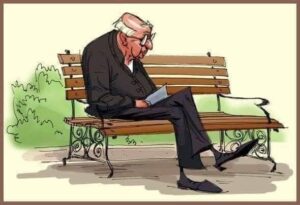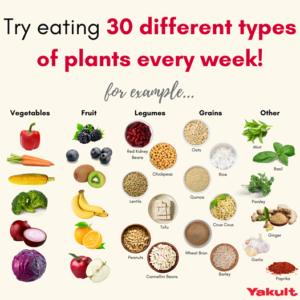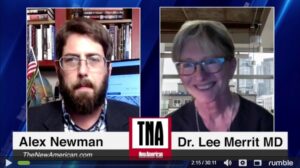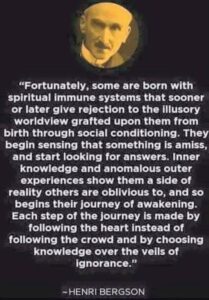(Tom: Linus Carl Pauling was an American chemist, biochemist, chemical engineer, peace activist, author, and educator. He published more than 1,200 papers and books, of which about 850 dealt with scientific topics. New Scientist called him one of the 20 greatest scientists of all time, and as of 2000, he was rated the 16th most important scientist in history.
Linus Pauling, Ph.D. (1901-1994), was the only person ever to win two unshared Nobel prizes. He received these awards for chemistry in 1954 and for peace in 1962. He contributed greatly to the development of chemical theories and was christened the father of vitamin C due to his research into and promotion of it as a vital health supplement claiming megadoses of it could help a great many conditions, one of them cancer.
He died at age 93 of prostate cancer, commenting before he died that it would have claimed his life 20 years earlier if it had not been for the 5-30 grams of vitamin C he ingested every day.
Pauling’s claim is hotly disputed by the medical establishment who claim bias and error on Pauling’s part but here you can read a damning summary of their position.)
This is an article written by Dr Hilary Roberts about Linus Pauling and his views on vitamin C.
Summary
It is the 10th anniversary of the death of Linus Pauling and his most controversial scientific conjectures about the health benefits of vitamin C are being confirmed. The weight of evidence may yet force the medical establishment to accept his ideas on nutrition and health.
Linus Pauling’s claim, that he knew a cure for heart disease, cancer and infections, was greeted with ridicule. His remarkable health claims concerned the substance we know as vitamin C. Now, ten years after his death on 19th August 1994, his revolutionary ideas are finally on the way to vindication. Given his history, it should not surprise us if Pauling was right all along. He was, after all, the leading chemist of the last century and, arguably, the greatest ever American scientist. He remains the only person to have won two unshared Nobel Prizes, the first for Chemistry (1954) and the second for peace (1962). In addition to being one of the greatest scientists ever, he was a renowned humanitarian.
By the time of his death, the medical establishment had branded Pauling a quack, because he advocated the use of high doses of vitamin C to treat many diseases. Irwin Stone first introduced Pauling to vitamin C, and explained that it wasn’t really a vitamin at all, but an essential substance we could no longer manufacture in our bodies. Most animals make their own vitamin C, in large amounts. In humans, the gene for this ability has mutated and no longer works properly.
When Pauling looked into Stone’s claims, he found that conventional medicine had long ignored evidence from respected physicians and scientists. This research suggested that high doses of vitamin C might be a cure for many illnesses, including cancer and heart disease. However, when he explained these findings in his wonderfully constructed books “Vitamin C and the Common Cold” and “How to Live Longer and Feel Better”, the medical profession was incensed, implying that a mere chemist could not possibly understand the intricacies of medical science.
If Pauling was correct, vitamin C could help overcome the major killers in the industrialised world. This sounded so unlikely that a lesser scientist making the claim would probably have been ignored; the medical world had already disregarded similar reports of vitamin C. Linus Pauling had a reputation for being 20 years ahead of other scientists.
He may well have been years ahead in other fields but, in medicine, the insiders considered such a thing to be impossible. Pauling battled with the medical authorities and convinced a lot of the public of the benefits of high dose vitamin C. He took on the medical establishment because the implication for health was enormous: an end to premature death and unnecessary suffering from heart disease, infection and many cancers.
Since Pauling’s death, the medical establishment has reclaimed the scientific position with a series of experiments on vitamin C. In particular, the NIH measured the distribution of vitamin C in the body and claimed that Pauling was wrong about the need for high doses, as the blood could be saturated at low doses [Proc. Natl. Acad. Sci. USA, 93, 3704-9.]. They added that doses higher than one gram were potentially dangerous. From this point on, the high dose vitamin C lobby were on the defensive.
If the body could be saturated at low doses, the argument went, higher doses were simply a waste or even potentially dangerous. However, clinical reports of the utility of high dose vitamin C had been repeated in the literature for over 50 years. These reports continued, particularly in the fields of heart disease, infections and cancer, contradicting the NIH conclusions. Either the clinical reports of the efficacy of high doses were incorrect, or the NIH experimental work was flawed.
Taking note of this inconsistency, Drs Steve Hickey and Hilary Roberts decided to investigate the data for a book (“Ascorbate, the science of vitamin C”, www.lulu.com/ascorbate). They began by looking at the apparently ludicrous claims for the medical effects of vitamin C. Pauling had stated that the substance could cure cancer and that shortage was the major cause of heart disease. Among his many scientific advances, Pauling had made occasional errors: perhaps he had done the same with vitamin C. If he was wrong, his hypotheses should be easy to refute.
When they examined the evidence, Hickey and Roberts found background evidence for Pauling’s ideas from independent scientific and medical reports, covering half a century. The findings in these papers could neither be dismissed as placebo effects nor easily explained. The reports included remission of AIDS, cures for cancer, and the immediate recovery of children at the point of death from septic shock. The claims seemed so out of the ordinary that they were hard to believe. However, Hickey and Roberts could find no counter examples in the scientific or medical literature.
If these positive reports were indeed wrong, no-one had shown this to be true. The scientific evidence was consistent with Pauling’s ideas, with a few notable exceptions. The primary exception was the NIH data on blood and tissue saturation. The medical establishment accepted the NIH conclusions and held them in the highest regard. The US Institute of Medicine had based their official recommended dietary allowance (RDA) on these results. If the NIH was correct, then Pauling was wrong and the positive reports of high doses must be invalid.
The NIH conclusions were not correct, however. Hickey and Roberts examined their experiments and found them to be full of errors. For example, the researchers had given a dose of vitamin C, waited until it had been excreted and then measured blood levels. Using this procedure, they found that increasing the dose did not greatly increase the blood levels. Instead of realising that this was because the dose had been excreted, the NIH claimed it was because the body was saturated, so higher doses were redundant. They then used white blood cells as a model for normal cells, to see how they absorbed vitamin C from their surroundings. These white blood cells are specialised to absorb vitamin C, even when supplies are low. If other body cells were similar to white blood cells, we would normally have a reserve of 40 grams in our bodies. In this case, given the proposed RDA of 200mg, it would take 2-3 years to fill a depleted body. This is demonstrably incorrect: the classic example is that James Lind’s sailors recovered from scurvy in a matter of days when they were given citrus fruits containing small amounts of vitamin C.
These mistakes were gross and unsupportable. In order to check their re-interpretation of the data, Hickey sent emails to the NIH, the Institute of Medicine and every scientist he could contact who was associated with the RDA, asking them to provide a reasonable scientific response to these errors. No-one was able to provide such a response. Since it is normal scientific practice to explain and defend your ideas, the hypothesis that people only need small amounts of vitamin C looks increasingly shaky.
Even the NIH’s subsequent data contradicts their earlier work. The NIH vitamin C group published a series of papers on vitamin C and cancer [Ann Intern Med, 140(7), 533-7.]. In these papers, they suggested that repeated doses of oral vitamin C would produce blood levels of at least 220 microM (a measure of the concentration) , which is three times greater than the 70 microM maximum “saturated” value they claimed in their RDA papers. While their own papers clearly showed that their low-dose claims were wrong, the NIH appeared not to notice. Instead, they suggested that intravenous doses could produce higher blood levels, which might be effective against cancer. Even though their data were coming closer to Pauling’s findings on the use of vitamin C in cancer, the NIH took the opportunity to mount another attack on Linus Pauling, suggesting he did not know the difference between oral and intravenous (IV) vitamin C.
Pauling had performed a series of trials with Dr Ewan Cameron, a Scottish cancer specialist, showing that intravenous vitamin C allowed cancer patients to live much longer than expected. Numerous other studies confirmed this effect, particularly the work of Dr Abram Hoffer and Dr Hugh Riordan. The Mayo Clinic tried to refute this research but failed, as they used low, oral doses, making their results invalid. In their own cancer paper, the NIH researchers claimed that Pauling and Cameron’s use of the IV route was “serendipitous”, implying that Pauling did not know the difference between injected and oral doses. In fact, Pauling had written explicitly about this difference, so the NIH criticism was misplaced.
A new scientific theory, called the dynamic flow model, explains all the observed responses to vitamin C in the literature. This model is described in the book “Ascorbate”, mentioned above. According to the model, people should ideally be in a state of dynamic flow, which means they should ingest more vitamin C than they need, in the form of divided dose supplements. The extra ascorbate flows through the body and is excreted in the urine. It is not wasted, however, as the excess acts as a reservoir when extra vitamin C is required. Dynamic flow is the closest we humans can get to restoring our physiology to how it was before we lost the ability to make vitamin C in our bodies, as most other animals still do.
It is difficult to imagine what Linus Pauling would have made of all this had he lived. Hickey and Roberts like to think that he would have pointed out the NIH errors earlier. He might have had fun explaining that the NIH could not perform a simple experiment, yet tried to blame him for the deficiencies in the Mayo Clinic’s research. It is now 10 years since Pauling’s death. Biologist Rene Dubos suggested that the mainstream converges with Pauling twenty years later. If so, we only have another decade to wait until the medical establishment can admit that Pauling was right all along.
https://www.medicalnewstoday.com/releases/12154#1








